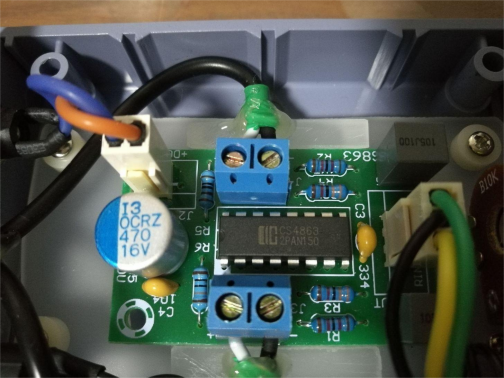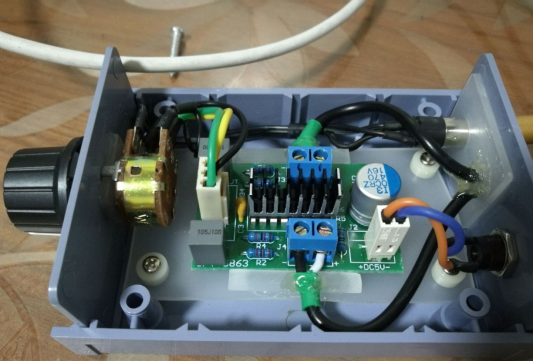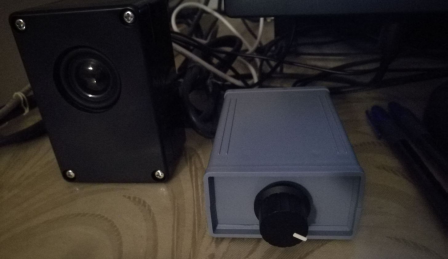
Are you unsatisfied with the audio output from your home computer's speakers? Perhaps you're experiencing issues like indistinct mid-frequency separation, flabby low bass from overlarge speakers, or overly bright highs. Even after attempting component swaps, such as replacing the "crossover" capacitor and upgrading to a 2.2uF MKT from the previous 3.3uF aluminum electrolytic, the audio quality persists with unwanted artifacts. Moreover, the amplifier board's capacitors may have deteriorated over time, despite efforts like incorporating ruby capacitors for improvement.
The layout of your PCB may also be contributing to the challenges you're facing. Even after changing the negative feedback capacitor to a Nichicon component, the desired audio quality remains elusive. In light of these issues, a potential solution is to embark on a DIY project to create a set of compact computer speakers. Prior to diving into the project, consider using waterproof enclosures sized at 100x68x50 along with 1.5-inch speakers to establish a solid foundation.

· Enhancing Amplification and Clarity


Taking a closer look at the amplifier board, upgrading the filters with solid-state alternatives from Lijie could yield marked improvements. Swapping monolithic capacitors for MKT105 components might also be beneficial. If the initial input feedback resistor values are unsuitable for computer audio output, a switch to 12K/33K values could offer a significant enhancement. Heat sinks integrated onto the chips can assist in heat dissipation.
Further optimization can be achieved through the implementation of a 10K potentiometer and the use of silicone wiring employing KF2510 connectors. Employing acrylic PCBs with strategically placed windowed frames can aid in optimal airflow and heat management, ensuring consistent performance.
· Elevating Speaker Performance

Turning to speaker assembly, the application of 100x68x50 waterproof enclosures proves prudent. Employing precision tools for opening holes and refining the openings with sandpaper attached to repurposed medicine bottles ensures a professional finish. Strengthening the speaker casings with additional layers of adhesive-coated crystal enhances structural integrity. Incorporating fish tank filter cotton for sound absorption can markedly improve audio quality. Moreover, affixing 1.5-inch speakers using 704B adhesive completes the speaker setup.
· Experience the Results
The holistic outcome of these modifications is indeed promising. These compact speakers deliver a well-balanced and crystal-clear sound profile, even at lower volume levels. Remarkably, there is no discernible amplifier noise, and powering the system using a 5V2A charger equipped with two solid-state output capacitors ensures both stability and enhanced audio quality. The additional solid-state capacitors effectively mitigate potential leakage issues associated with temperature variations in the amplifier's components.
· Technical Considerations
The output power of the 4863 model is 2.2W*2, ideally matched to the 3W-rated speakers. Rigorous testing, such as subjecting the system to a 0.5V audio source input at a temperature of 30°C, indicates that the amplifier can reach maximum volume without introducing distortion. Extended listening sessions produce only minimal heat accumulation in the amplifier, with the charging unit maintaining a consistently cool temperature.
· Exploring Alternative Capacitor Use
For those who may question the suitability of solid-state capacitors for audio applications, rest assured that their usage is viable as long as they exhibit sufficiently low leakage current. This makes them well-suited for filtering purposes, although their application in coupling feedback should be approached cautiously. The primary role of filtering is to eliminate ripples and facilitate high-current output, consequently minimizing voltage drop during power supply.
· Addressing Power Supply Variability
Distinguishing between switching power supplies and mains frequency transformers is crucial for understanding stability in ripple and abrupt current changes. Seercon's model, for instance, maintains a ripple of approximately 50mV, comparable to standard EI transformers. Premium options like Enpo exhibit ripples of about 20mV. It's important to note that ripples are not a significant concern. While addressing significant current fluctuations, it's worth noting that the output remains well within the 1A range. This is particularly relevant when dealing with AB class miniature bridge-tied load (BTL) amplifier ICs. In practical terms, even Asus's HIFI motherboards coupled with ATX power supplies seldom result in compromised sound quality.
In conclusion, the journey to optimizing your computer speakers is multifaceted, involving meticulous component choices, strategic assembly, and thorough testing. By following these principles, you can elevate your audio experience and ensure that your system delivers exceptional sound quality.




